- Home
- Ramachandra Guha
The Picador Book of Cricket Page 12
The Picador Book of Cricket Read online
Page 12
I was certainly not confident that I had convinced my listeners with that particular line of argument. Nor did I convince myself.
On the cricket field Bradman and I had the greatest respect for each other. I certainly did for him, and I know he did for me, but I might as well come straight out with it and let you know that, off the field, we had not much in common. You could say we did not like each other, but it would be closer to the truth to say we chose to have little to do with each other.
I don’t really think that this arose from the ego-laden encounters of our younger days. It was more the product of the chemistry arising from our different backgrounds. Don Bradman was a teetotaller, ambitious, conservative and meticulous. I was outspoken and gregarious, an equally ambitious young man of Irish descent.
J. H. FINGLETON
Brightly Fades the Don (1949)
On the sunny afternoon of 10 September 1948, Don Bradman was dismissed for the last time on English soil in a first-class match. Indulging in a hectic splurge of boundaries and running his score to 153, thus topping Barnes’s 151 for the highest score in the match, Bradman singled out Bedser for his wicket and hit a ball high into the covers. By fate, it was Len Hutton, who, ten years before at the Kennington Oval, had taken the record score for the Test series from Bradman, who stood underneath the catch, but while the ball was yet soaring Bradman turned, took off his cap and ran full pelt for the pavilion.
By the time that Hutton’s two safe hands had closed on the ball, Bradman was halfway to the pavilion. He did not turn to see whether the catch had been taken. He continued running, gloves, cap and bat fluttering from his hands, and almost before this huge Yorkshire crowd at the Scarborough Festival had had time to warm its hands in appreciation to him, Bradman was lost to view for ever as a first-class batsman on an English ground. It was the end of his 120th innings in England. He had scored the last run of his mammoth total in four tours of 9,837 runs; the statisticians were already discovering that he had averaged 96 runs per innings.
This was a most significant moment in cricketing history. Devotees of a game in a country in which many of its most illustrious players had continued long after [Bradman’s] forty years of age could not credit that one so brilliant and so chockful of runs could possibly think of retirement when still lord and master of the cricketing domain. But the grim, purposeful Bradman had stated, before leaving Australia in March, that this would definitely be his last tour of England, no matter what happened. Not for him a repetition of the closing career of another illustrious Australian, Dame Nellie Melba, whose indefinite ‘definite farewell appearance’ became the joking butt of the country.
‘Never,’ said Sir Norman Birkett, at a London dinner in April, after Bradman, in a speech, had reiterated his intention to make this his final tour, ‘never have I heard more tragic words fall from the lips of any man – but there is given to all men a chance to repent and, maybe, Bradman will yet repent words and an intention that seem intolerable to us.’
But those of us who knew Bradman knew full well at Scarborough that September day that we were watching him leave an English field as a batsman for the last time. It was, as I have written, a most significant moment in cricketing history. We had seen the thousands gather in front of the blitz-scarred Kennington Oval pavilion and applaud him most generously when he appeared and spoke to them at the end of his last Test match against England. Exactly a week later, he came, after hundreds had whistled and cheered and called for him, on to the pavilion balcony at Lord’s and waved to the crowd below. This was at the finish of the game against the Gentlemen of England and everybody knew then that Lord’s was seeing Bradman for the last time. A few minutes before he had fled from the field at the head of his Australian team as the match finished in yet another hollow victory. Bradman invariably fled from an English ground where, unlike the Australian grounds, there are no pickets to keep out the invading throng, and the invaders, as one, always made straight for Bradman at the game’s finish.
He was burning, in this summer of 1948, his English pavilions behind him. On all famous grounds, as he made his farewell appearance, he was clapped to the centre as he walked slowly – always, all his cricketing lifetime, had he walked slowly to the middle as a batsman – but, at the finish of the game, a quick sprint took him soon from view. At Leeds, the most famous of all his happy hunting grounds, there was that lovely but practically unnoticed gesture of the English man in the street to Bradman as a very old and very squat Yorkshireman stood clapping, gnarled pipe in mouth and the most intent look and smile of appreciation on his face, as Bradman sprinted past him to the dressing room. ‘Ah,’ said the aged Yorkshireman, forgiving in a trice all the humiliation which Bradman had showered on his bowling heroes, ‘you ——!’ In Australia you may call a man such a name and it is a compliment when you say it with a smile. At Leeds, this day, this simple old Yorkshireman epitomized what the English cricketing public thought of Bradman over the years. The smile; the clap; the all-embracing look of intense pleasure which the retreating form had given him and, finally, the complimentary epitaph which spoke so well the thought that Bradman had been just too good – too good for every country and everybody if we except the turbulent period of bodyline when the most vicious form of attack known to the game was devised to curb the greatest batting automaton the game of cricket had produced.
Scarborough was the end of all this. Scarborough was the end of what Sir Pelham Warner has aptly termed . . . ‘the Bradman era’. English cricket was free, at long last, of the Bradman plague, the Bradman scourge, the Bradman blight, call it what you will. On this lovely September afternoon, the cricket world far removed from that outside world of trouble and limitless and abortive peace talks, Bradman yielded up his batting ghost for the last time to English cricket, and his remark on returning to the pavilion, made in all good humour, was typical of the man.
On his entry, a sleepy Hassett stretched on a form.
‘Ahhuum,’ yawned Hassett, ‘what happened? Did you chuck it away?’
‘Well,’ said Bradman, with a wide smile, ‘I worked it out that to average 100 for every innings I have had in England, I would have had to make about 500 not out – and this game, as you know, is limited to three days.’
A few days later, at Balmoral, in Scotland, the Australian cricketers were entertained by their Majesties, the King and Queen.
‘Tell me, Mr Ferguson,’ said the King, with a twinkle, to ‘Fergie’, the official Australian scorer, ‘do you use an adding machine when the Don comes to bat?’
‘Fergie’ laughed and was stumped for an appropriate answer but he knew that, over the years, the King’s suggestion would have been a good one. ‘Fergie’ is a wizard scorer. He has a system all his own. He not only notes the bare details but he keeps diagrams which show, at a glance, where the batsman’s runs have flowed and off which particular bowler; and, for good measure, he sketches on his sheet during the game a view he might have of steeples or trees or nearby houses. His scoring sheets, therefore, are things of rare attraction but, over the twenty years he scored during the Cricket King’s Reign, ‘Fergie’ had no time for extraneous sketches. The Don kept him too busy for that and often, too, ‘Fergie’ had seen scoring boards go hay-wire in trying to keep up with Bradman’s phenomenal flow of runs. It might be here that the scoring-board had not sufficient numerals in the hundreds to register after the second or third one; it might be there that the total got out of hand while a demented scoring attendant on the board tried to do justice by Bradman’s and the side’s totals at the same time. For never in the history of the game, Grace, Trumper, Hobbs and all the others notwithstanding, had the game known a batsman to approach Bradman’s profligacy in the scoring of runs . . .
People will tell you that figures do not do justice to the superlative art that was Trumper’s. Macartney was another whose skill was not revealed by figures, and the same, in my time, applied to McCabe. But as long as cricket lives, figures will tell the revealing
story of Bradman. They will not tell, perhaps, of the murderous upsurge which happened whenever a ball was pitched short and Bradman fell into his very individual pull shot, but they will tell for all time how Bradman made runs and how he went on and on making runs.
In his pen picture of Bradman . . . Major Vincent, of The Times, tells how many people found themselves with a desire to go and have a beer after watching Bradman bat for some time. That was true but it applied more to Bradman in the post-bodyline period than before the days when Jardine and Larwood, the decision having been made that his batting technique was above them, decided to probe him on the physical side. Bodyline did leave its imprint on Bradman – as it did on all other Australian class batsmen who struck its full fire. Seldom, if ever, afterwards did Bradman’s batting have the same jaunty air, if one may so term it, which distinguished his batting in 1929, 1930 (in England) and 1930–1 and 1931–2 in Australia. The bodyline sear was still there in 1934 in England when he experienced the only known run of outs in his whole first-class career.
Nothing I have experienced or read since has influenced me to alter, in the slightest, the bodyline story which I told in Cricket Crisis, and that historic happening in cricket was unimpeachably because of Bradman’s influence and dominance in cricket. Bodyline was specially prepared, nurtured for and expended on him and, in consequence, his technique underwent a change quicker than might have been the case with the passage of time. Bodyline plucked something vibrant from his art.
It so happened, too, that soon after the bodyline period, Bradman became the Australian captain. This has to be considered in the general picture of Bradman’s change of technique because it can be accepted that Bradman the batsman often became subservient to Bradman the captain. This was so, particularly, in the Australian season of 1936–7 when he had an uphill captaincy fight after Australia had lost the first two matches of the rubber. I batted almost the whole of one Test day with him in Melbourne when he refused to take the slightest risk because of the state of the game, and he did that again, often, in the series of 1938 (in England), 1946–7 (Australia) and, finally, this last season of 1948 in England.
Yardley quietened him for over after over in the first Test at Nottingham with leg theory. The 1930 Bradman would have thrived on such stuff; nor would the 1930 Bradman have adopted the 1948 technique of pushing his pads at the ball in negative answer to Bedser’s threat of the fine-leg trap.
This, of a certainty, is not a criticism of Bradman. It is but another way of asserting that (a) nobody would have gone for a glass of beer while Bradman was batting in 1930 and (b) how successfully he changed his run-getting technique to suit requirements and the passage of years.
There were, I think, three periods of the Bradman era. One was pre-bodyline; the other was from then to the beginning of the world war, and the final was from 1945 to the end of 1948. In his first post-war game against England (for South Australia in Adelaide) Bradman found that his mind was moving quicker than his legs. He accommodated his technique to that, but in all periods of his era, though his technique changed considerably, Bradman retained to the last the most remarkable appetite for runs that the game of cricket has surely ever known.
As at Scarborough in his last innings, Bradman threw his wicket away on a number of occasions in England in 1948, but never until he had reached his objective, and Bradman, in all his career, never began an innings in any game without an objective. As I read his mind, he had two objectives before this 1948 tour started. One was to lead an unbeaten team through England (which had never happened before) and the other was to be cock of the batting walk until the very last. And he achieved both. No side beat this twentieth Australian XI, and Bradman, with 2,428 runs, was well ahead of the next batsman, Morris (1,922), though Morris and Barnes beat him in the Test averages.
I retain one vivid picture of Bradman’s insatiable appetite for runs. It was late in the tour at Manchester and on the final day, when Bradman’s decision to bat on denied the game any reasonable chance of a decision. All competitive interest had long since flown the game. Bradman had left his mark on it and Old Trafford by making a century, but in the 120s he scuttled as hard to run a three as a tyro would in running a three to make his first century in any type of a game. That was typical of Bradman. He never tired of making runs, even in his fortieth year. There was one previous occasion in this game when Bradman might have had a quick two, but the inimitable Sydney Barnes had his own ideas about the sharing of the strike. As Bradman turned for the two, Barnes had his broad back turned at the other end. It was a clear case of disagreement and, from the outside, it was apparent that Bradman rebuked Barnes down the length of the pitch.
Barnes, not easily rebuked, motioned to Bradman and made as if to walk out while the Lancashire men enjoyed the general situation. It transpired that Barnes said to Bradman: ‘Here, you come and have it all. I’ll have none.’
Bradman planned everything and, in his long career, I saw his complacency only twice rattled. Once was during the bodyline days and the other whenever a ‘sticky’ pitch happened along. Sir Pelham Warner writes of when Bradman scored a masterly 71 on a bad Sydney pitch in 1932. To be true, that was a lovely innings, but there was no fast English bowler playing that day, and for each of the few times Bradman succeeded on a bad pitch one could name half a dozen times when he failed. It was reputed of Dr Grace (‘Strange to say, champion and all as W. G. was, he was not in any way a wonder on a sticky pitch’ – Jack Worrell) that he had his limitations when the pitch was not good, and Bradman, though possessed of all the fundamentals to succeed, certainly had his. Bradman’s limitations on a bad pitch were, I think, largely psychological. His whole demeanour changed on a sticky pitch and the psychologist had something to work on at Old Trafford on the final day of the third Test when Bradman, after every ball, walked down the pitch and energetically patted it, whereas, at the other end, Morris barely worried about it. This pitch was not bad. Something has happened to English pitches so that nowadays one rarely gets a bad one, and the turf certainly did not lift at Old Trafford this day. It was a sodden pitch, but Bradman’s exaggerated patting of it was as if to suggest that it was a nasty business. Not a single ball flew.
That was one side to Bradman’s batting nature and, to the student and historian, an interesting one, but, on good pitches, none will deny that this most amazing cricketer was the greatest personality the game has ever known. Much has been said and written of the ‘jealousy’ of those who played with and against Bradman, but those best qualified to speak are those who played with him, and I have never met a single first-class cricketer of Bradman’s age who was not ever ready, indeed eager, to declare that the game of cricket had never known his like before. He had his critics, and will always have, I suppose, for his somewhat indifferent, cold and unfriendly attitude towards most of those with whom he played, but not one, I repeat, has ever denied the greatness which rightly belongs to Bradman. On good pitches, he stood in a class of his own as a scoring machine; and, moreover, the game has never known one to approach, yes, even approach, his miraculous consistency. When you boiled Bradman down, when you analysed his eyesight, his footwork, his judgement, his range of strokes, there was still something left in which he was also superior to all others, and that was consistency.
What was the secret of Bradman’s consistency? That is a subject which will be always fresh as long as cricket is played, but I am inclined to think that the answer is to be found not so much in anything physical as in the mind. With the exception of those two perturbing instances I have mentioned, Bradman’s mind was always cool, calm and analytical and, in its sphere, was as great a taskmaster of the body as man could possess. His mind gave his body no rest. His mind called the tune and his body, gifted as it was in peerless footwork, eyesight, judgement and a perfect dynamo of ceaseless energy, danced to it. The only times the dance became agitated were against bodyline and on sticky pitches.
One does well to try and analyse Bradman’s mind b
ecause, in all cricket, I met no other like it. He was the only cricketer I knew who never tired of the game, who never became bored by it, who never became stale – or, if his body did, his mind would not allow it to be so.
Trumper, it was said, looked about for some deserving fellow after he had made a century and, unobtrusively, allowed him his wicket. It was said, further, that some English professional down on his luck often found himself back in the good books with Trumper’s wicket against his name. A batsman like McCabe, after a run of good scores, would find himself bored and allow himself to become careless, but Bradman never allowed himself to relax or relent until his objective had been achieved. After a good day, the average cricketer, feeling at peace with the world, would seek out his comrades for a yarn and a little jollification in the evening, but Bradman either denied himself or did not want such mundane pleasures. He was not to be found.
Bradman’s ways were not those of the ordinary cricketer. In the 1930 days of youthful rectitude, he made a very strong public statement against strong drink. Somewhat unkindly, impassioned zealots blazoned that statement out from noticeboards wherever Bradman went in England in 1948. He had changed somewhat in that direction but he had not changed in his general mixing. Down the Suez Canal, in October of 1948, a hot and dusty RAF lad bawled across the canal to the ship on which Bradman and his men were travelling: ‘Hey, there, where are those Ashes? We’ll get them from you next time, Don.’ A day later came a lovely wireless message from Aden, arid, barren, rocky, sizzling Aden of all places, and in its message of greetings to Bradman and his men it concluded with a challenge to play the cricket-weary Aussies at cricket. It was from the RAF there, the RAF in one of the grimmest outposts in the whole world, and the day the Orontes arrived at Aden an RAF launch bobbed up and down, officers in cummerbunds and white mess jackets, waiting to take the cricketers off and entertain them.

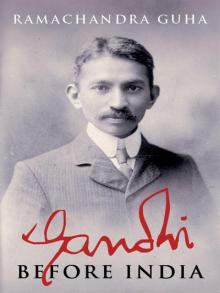 Gandhi Before India
Gandhi Before India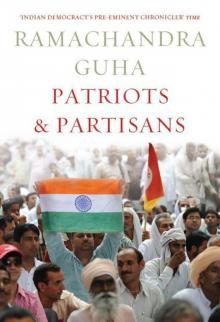 Patriots & Partisans
Patriots & Partisans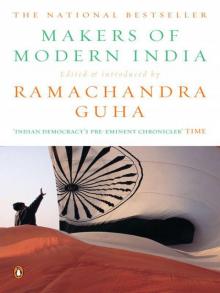 Makers of Modern India
Makers of Modern India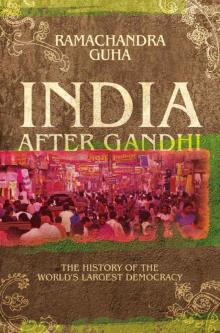 India After Gandhi: The History of the World's Largest Democracy
India After Gandhi: The History of the World's Largest Democracy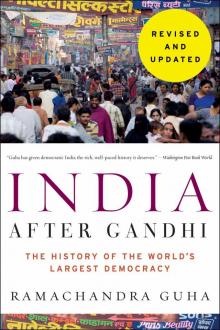 India After Gandhi Revised and Updated Edition
India After Gandhi Revised and Updated Edition The Enemies of the Idea of India
The Enemies of the Idea of India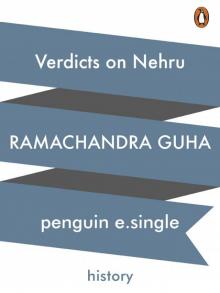 Verdicts on Nehru
Verdicts on Nehru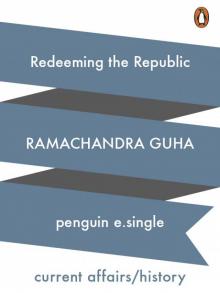 Redeeming the Republic
Redeeming the Republic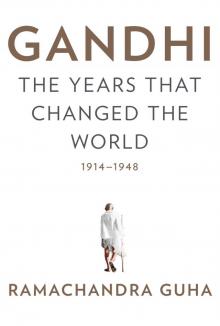 Gandhi
Gandhi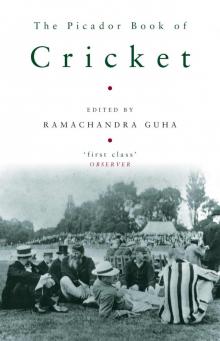 The Picador Book of Cricket
The Picador Book of Cricket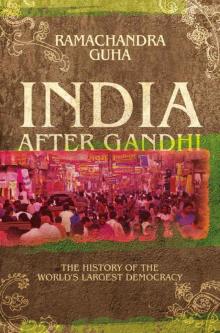 India After Gandhi
India After Gandhi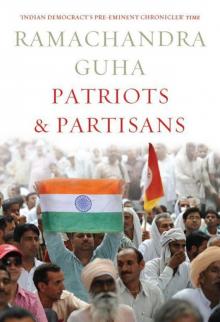 Patriots and Partisans: From Nehru to Hindutva and Beyond
Patriots and Partisans: From Nehru to Hindutva and Beyond